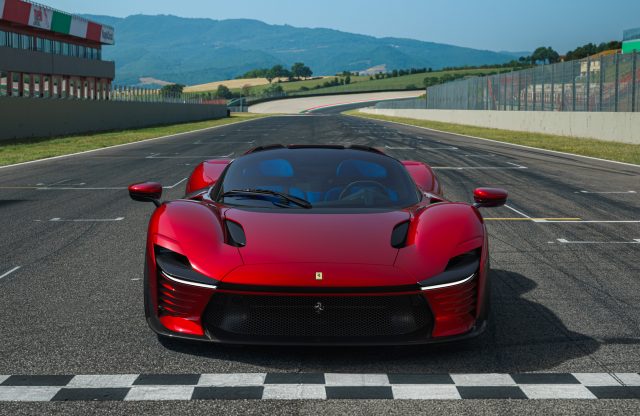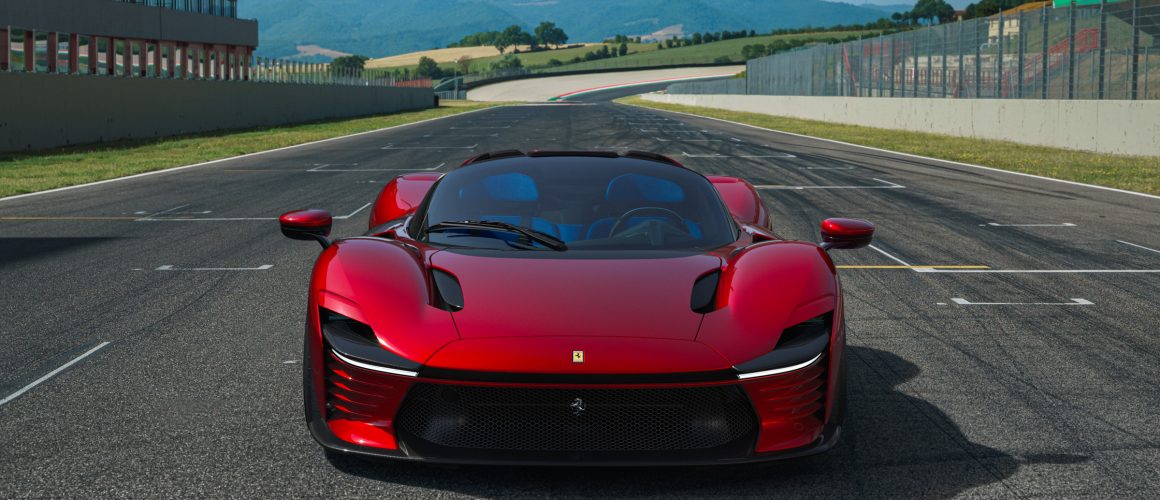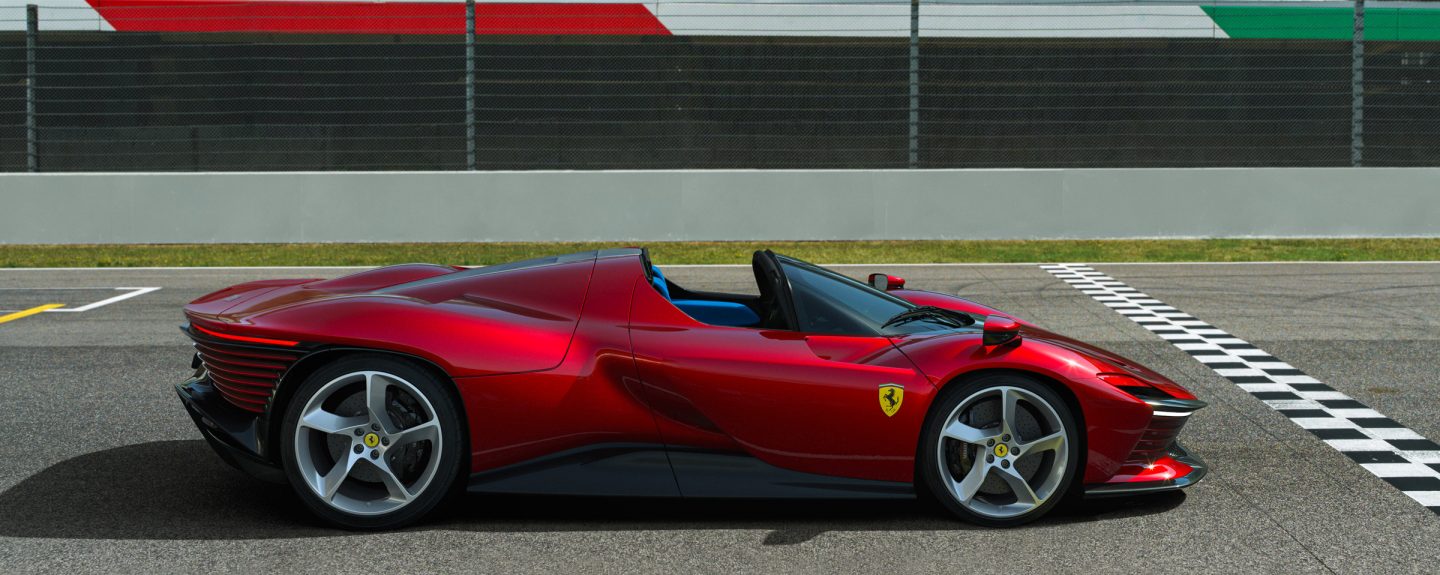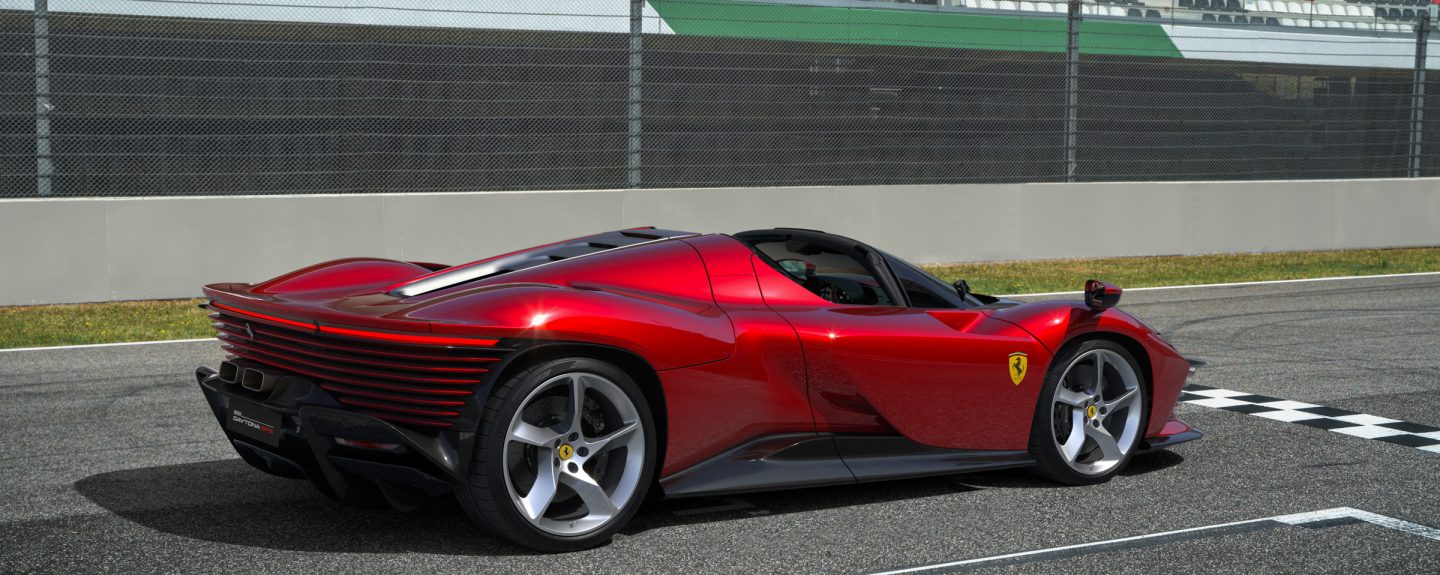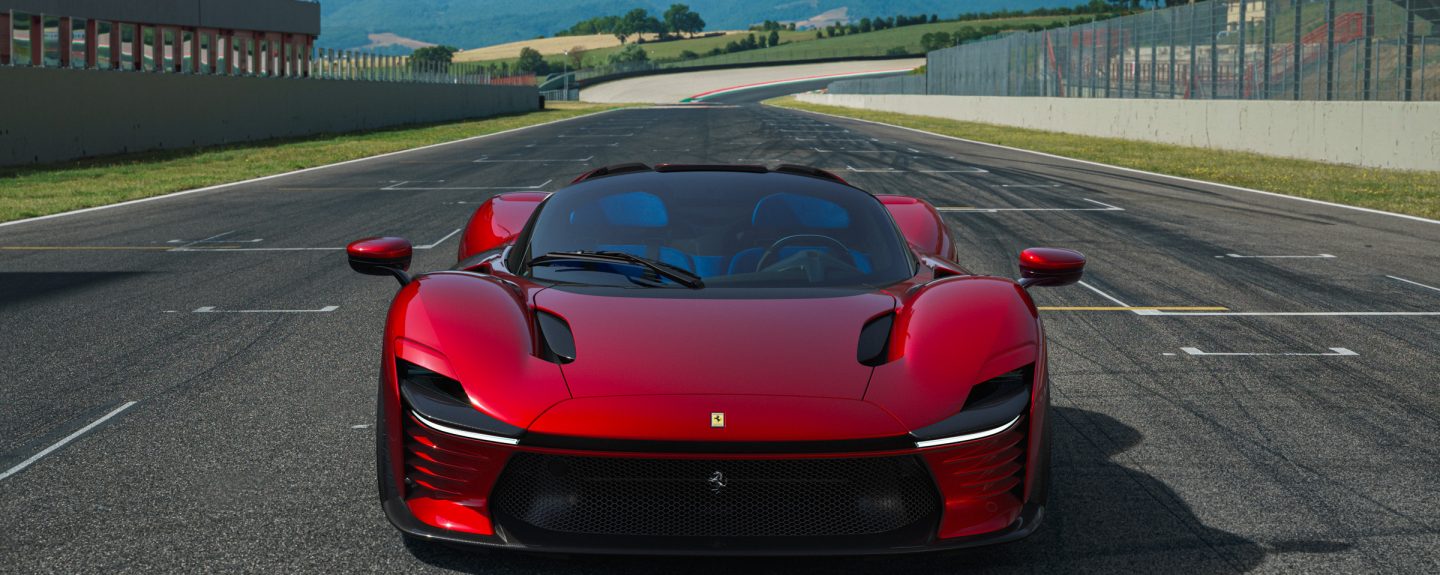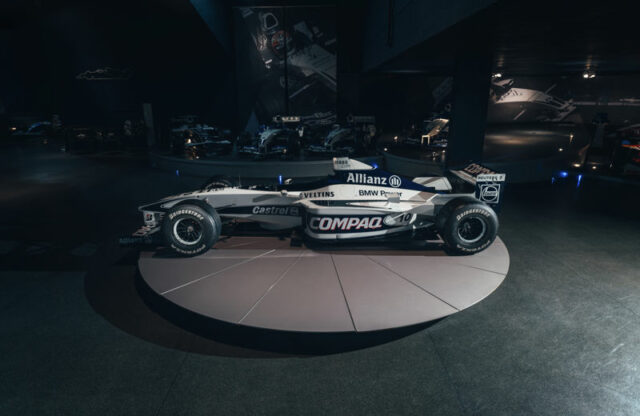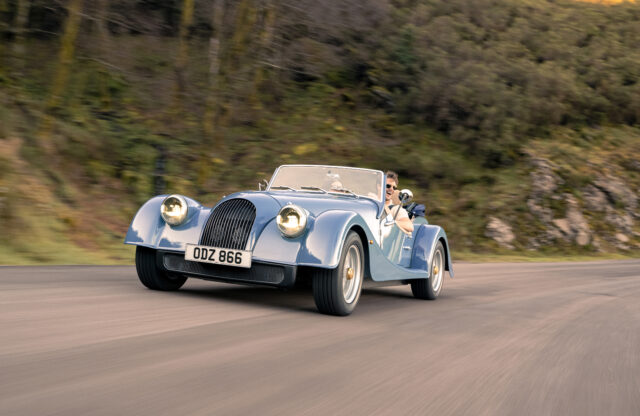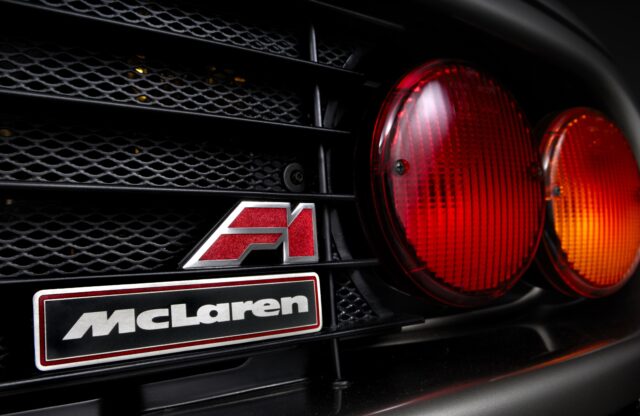WORDS: elliott hughes | PHOTOGRAPHY: ferrari
American exceptionalism seemingly knew no bounds during the 1960s. Capped off in 1969 by Neil Armstrong’s historic first steps on the lunar surface, the decade provided icons in almost every field of human endeavour: Jimi Hendrix, Muhammad Ali, Steve McQueen, Marilyn Monroe, the list goes on.
Motor sport was no different. A certain Carroll Shelby helped Ford to deliver an emphatic all-American hammer blow to Ferrari’s ten-year hegemony over endurance racing by winning the Le Mans 24 Hours, Daytona 24 Hours and Sebring 12 Hours in 1966.
But Enzo Ferrari was known to be a man of steely, single-minded resolve, and vowed to return to the top. So, in 1967 Enzo instructed Ferrari technical director Mauro Forghieri to do whatever it took to spring an unwelcome surprise on Detroit’s Blue Oval.
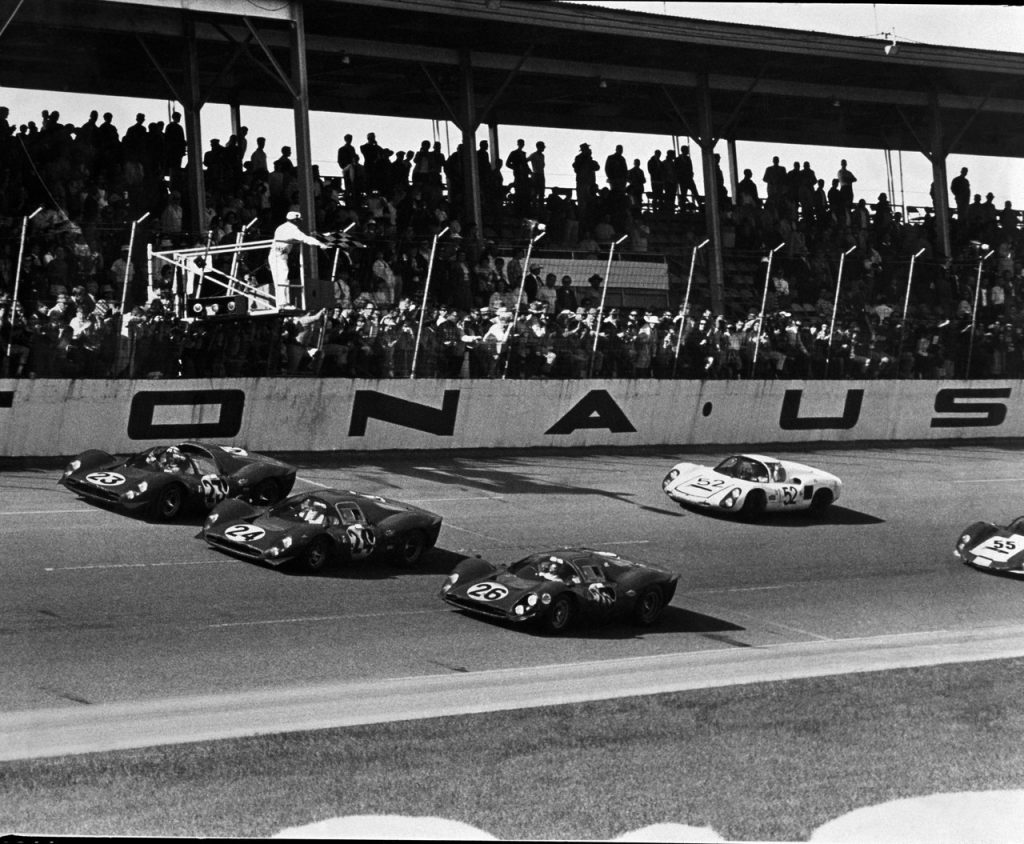
Forghieri’s work resulted in the all-new 330 P4 and refined 330 P3/P4 race cars. The P4 was more slippery than its predecessor, produced more downforce, had revised suspension and magnesium wheels, and was fitted with a potent Formula 1-derived 4.0-litre Colombo V12. The P3/P4 was effectively a P3 chassis fitted with the new V12.
An historic 1-2-3 finish at the 1967 Daytona 24 Hours followed, with the leading 330 P3/P4 flanked by a 330 P4 and 412 P as they crossed the finish line, producing one of the most iconic images in motor sport history – and also prompting the front-engined 365GTB/4 grand tourer to be nicknamed ‘Daytona’.
This revered snippet of Ferrari mythology was the inspiration for the third instalment in its limited-production Icona series: the Daytona SP3. Similarly to the previous Monza SP1 and SP2 Icona cars, the Daytona SP3 is a sonorous V12 serenade to its endurance-racing glory years, with styling that blends vortex generators, winglets and canards with voluptuous ‘60s buttresses and curves.
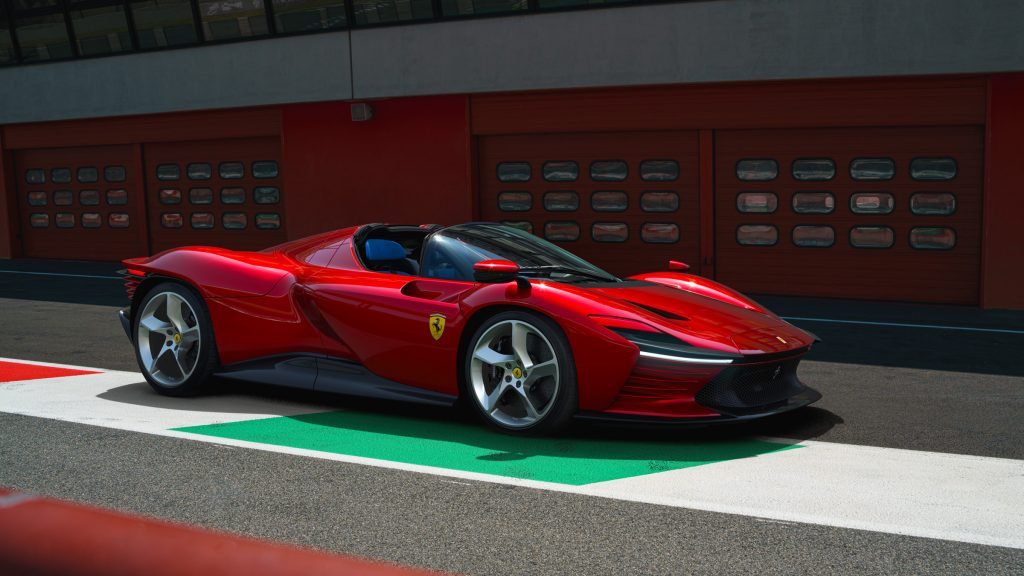
Ferrari’s arresting blend of modern and classic styling cues means that the Daytona SP3 not only looks fantastic but also produces an impressive 230kg of downforce at 124mph; it is the most aerodynamically efficient Ferrari ever made without active aero devices.
Maranello’s design team has achieved this by employing levels of aero-wizardry usually reserved for its Formula 1 cars. Chimneys syphon low-pressure air from the underbody, ducts in the front grille cool the brakes and generate downforce, and the central backbone in the engine cover supplies cold air to the V12 while also expelling heat from the dramatic straked rear end.
As bewitching as the sculptural looks may be, it’s the Daytona’s mid-mounted 829bhp 6.5-litre naturally aspirated V12 that is the star of the show. The SP3 engine is a development of the F140HB V12 used in the 812 Competizione Grand Tourer. Dubbed the F140HC, the SP3’s V12 produces 10bhp more than the 812 Competizione version, thanks to refinements such as titanium conrods, new piston pins, a lightened and rebalanced crankshaft, revised camshafts and valves, and a “radically redesigned” intake system. Like its ’60s forebears, power is sent solely to the rear wheels, which are shod in bespoke Pirelli P Zero Corsa rubber.
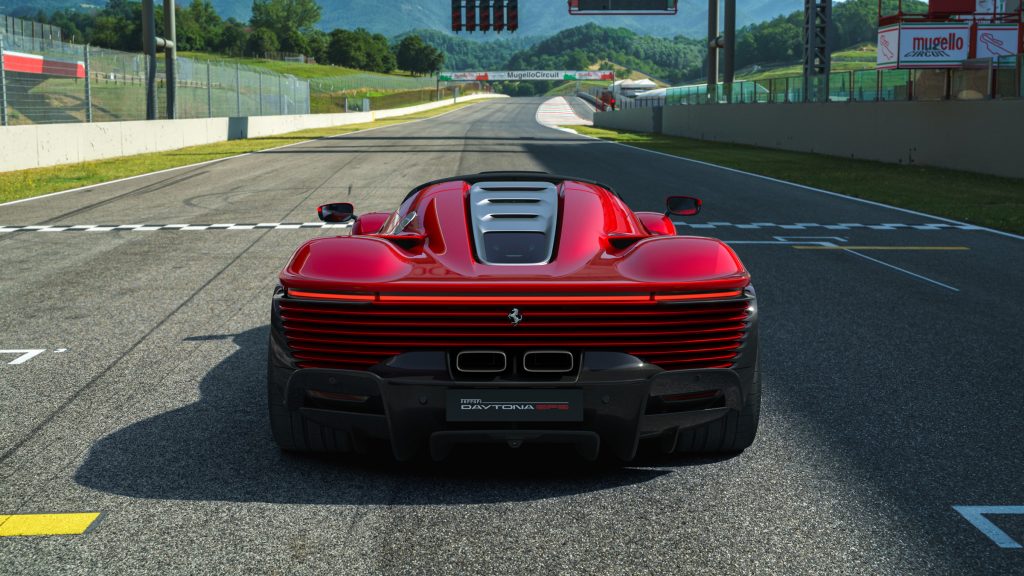
A seven-speed dual-clutch transmission delivers blisteringly fast gearchanges once the climactic 9500rpm red line is reached, meaning that 0-62mph is achieved in just 2.85 seconds and 0-124mph dispatched in 7.4 seconds. Top speed is quoted to be “in excess” of 211mph.
Aiding the Daytona’s voracious acceleration figures is its 1485kg kerbweight, which ranks as spritely by today’s standards. The lack of hybridisation has certainly helped in this regard, as has the sole use of composites for the bodyshell and chassis. The composite materials used are also some of the most advanced available, and are usually reserved for the aviation industry: T800 carbonfibre for the tub and T1000 carbonfibre for the doors and sills, as last seen in the LaFerrari hypercar.
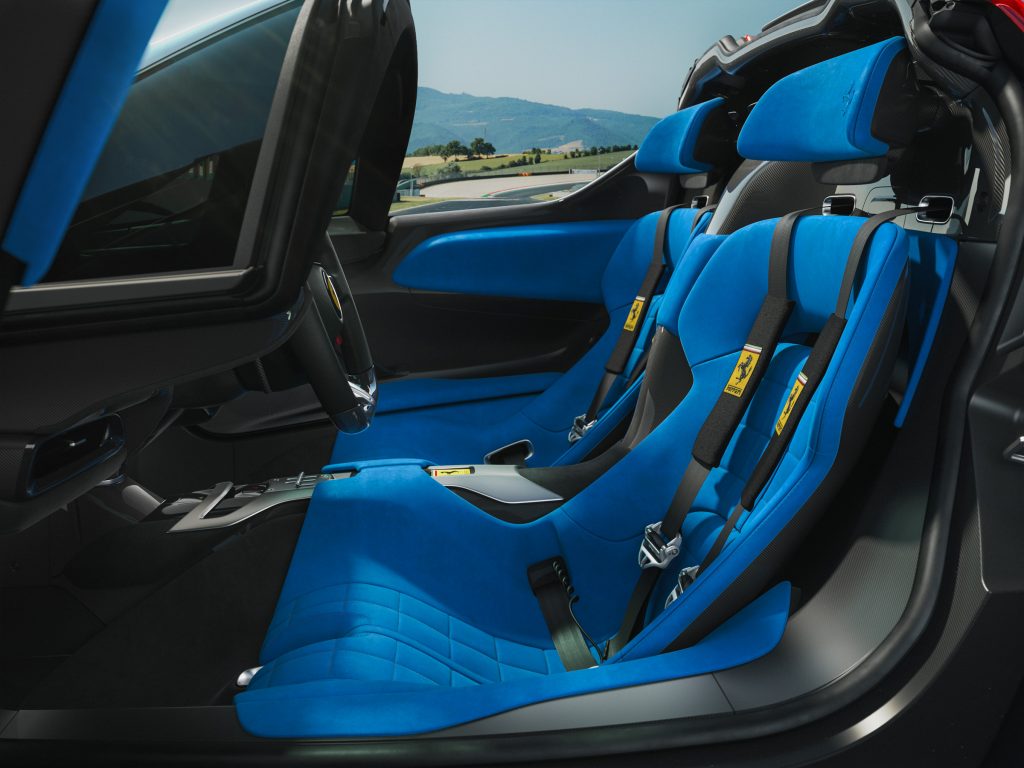
Another area of LaFerrari influence can be found in the car’s interior. The deep bucket seats are fixed and formed into the carbon tub, with an adjustable pedal box and steering wheel fitted for driver comfort. The fixed seat and adjustable-pedal arrangement provide several advantages: a lower centre of gravity, less weight, optimal weight distribution and a fittingly low and racy driving position.
The gated gearbox switches, buttons and 16-inch screen are all borrowed from the latest 296GTB and SF90 Stradale models. The familiar steering-wheel-mounted Manettino dial allows the driver to quickly flick through various modes, and the Daytona comes installed with Ferrari’s latest Side Slip Control system, should the person at the wheel feel brave enough to use it. Ferrari says its designers have created a “meticulously refined space that delivers the comfort and sophistication of a modern Grand Tourer while keeping the styling language quite minimalist”.
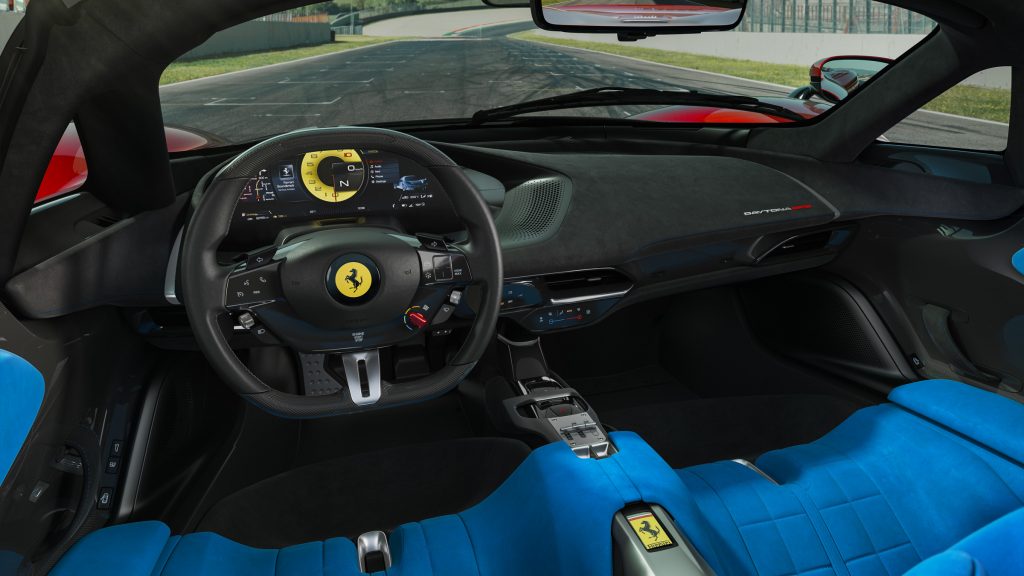
Ferrari will make 599 Daytona SP3s at a price of €2 million each and, predictably, all are spoken for. Several Ferraris have been tipped as the swansong to Maranello’s V12, but the Daytona SP3 proves that Enzo’s defiant streak is still as alive and well in 2021 as it was in 1967 against the might of Ford. Long may it continue.
If you liked this, then why not subscribe to Magneto magazine today?
